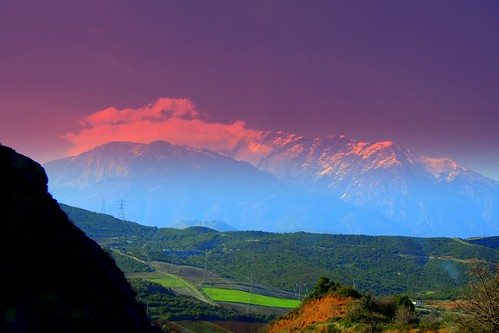The human right violation is not an unknown story in China; the encroaching dragon was always a problem for its neighbors. Recently I came to know about the Arunachal issue in details from Kalyan’s blog. It is really petty to claim a state of India, which has been an integral part of India. A part of Kashmir is under China, were they at all involved in the controversy in past? Because of this aggressive nature even Dalai Lama has taken shelter in India.
Coming back to the picture, it’s an instant shot. So the face of the Lama has a typical vivid expression of innocence and hesitance. The dress is typical Tibetan and the surrounding is of greenish Himalayan valley.




